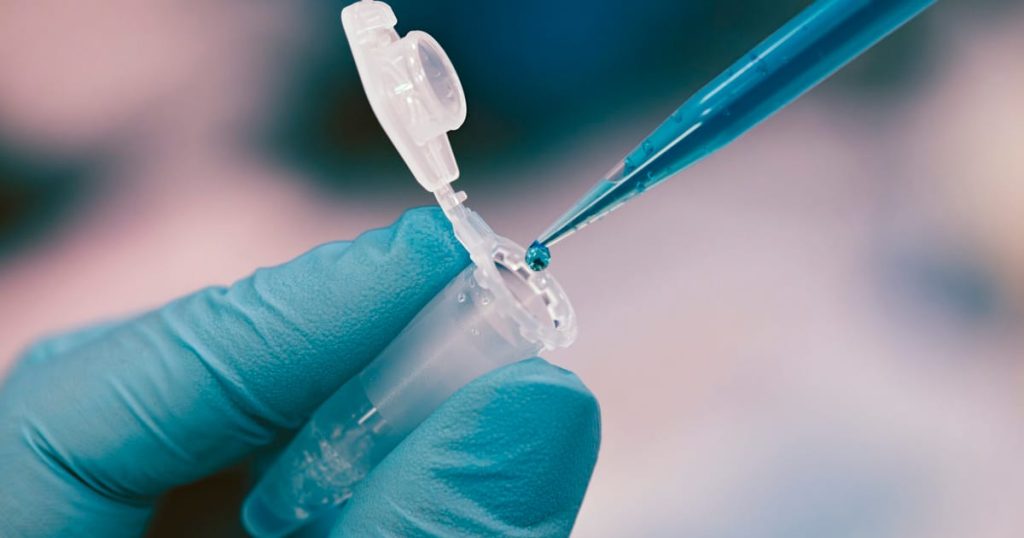The dream of early detection for ovarian cancer is now one step closer to reality: according to the results of a new study published today in Science Translational Medicine, it would be possible to identify, years in advance of the first clinical manifestations of the disease, molecular alterations specific to ovarian cancer DNA in swabs already in use for the Pap test — the common cervical cancer screening exam.
Early detection of ovarian cancer, of which symptoms manifest usually in the last stages of the disease, is critical for survival. In fact, the survival rate at five years is just 30 percent for cancers diagnosed at stage III (or more), the most abundant, but it is 90 percent when the tumor is diagnosed at stage I.
“Ovarian cancer survival is highly dependent on the timing of diagnosis: changing our ability to make early diagnosis means changing the chances of cure. And that is exactly what we believe is possible through an innovative, yet fairly simple approach: applying specific genomic analysis on the samples collected during Pap tests in search for the molecular signature of ovarian cancer: its genomic instability,” say Maurizio D’Incalci, professor of pharmacology in Humanitas University and head of the Laboratory of Antitumor Pharmacology at Humanitas Research Hospital, and Sergio Marchini, head of the Translational Genomics Unit in the same institute, who designed and coordinated the study.
Early detection of ovarian cancer, of which symptoms manifest usually in the last stages of the disease, is critical for survival.
The research was conducted retrospectively using Pap test swabs from 113 patients, collected and analyzed in collaboration with numerous centers throughout Italy, and was made possible thanks to the support of the Alessandra Bono Foundation, AIRC Foundation for Cancer Research and Alliance Against Cancer.
Ovarian cancer: the challenge of early diagnosis and the role of genomic instability
Globally, more than 250,000 women each year are diagnosed with ovarian cancer. Its most frequent form is called high-grade serous ovarian carcinoma (HGSOC). It counts for 70 percent of all diagnoses and it is the most aggressive and lethal form of the disease, often resistant to chemotherapy, especially because it is diagnosed at an advanced stage. In fact, ovarian cancer is a disease that does not give easily recognizable symptoms.
In recent decades, several research groups around the world have tried to develop early detection techniques for ovarian cancer, without success. One such technique, like the one proposed today by Humanitas researchers, was based on the analysis of samples collected through Pap tests, but in that case scientists were looking for a genetic mutation that turned out to be not specific enough.
Genomic instability is a primitive feature that is not shared with healthy cells: an excellent starting point for developing an early detection test.
“What makes the difference now is the idea of looking at a macro molecular feature of cancer cells: their genomic instability,” explains Sergio Marchini. “Today we know that in the early stages of the tumor transformation process, the DNA of future neoplastic cells is characterized by profound abnormalities in its structure and organization. Thus, genomic instability is a primitive feature that is not shared with healthy cells: an excellent starting point for developing an early detection test.”
The retrospective study of 113 patients with ovarian cancer
To carry out the study, researchers collected Pap tests samples taken years before diagnosis from 113 women with ovarian cancer. The swabs were analyzed using a DNA sequencing technique that allows them to detect even small traces of tumor DNA and measure their genomic instability. The results obtained were compared with a control group: the Pap tests of 77 healthy women who had not received any cancer diagnosis in subsequent years.
“For the first time, the data are really promising: they show that the technique used is able to recognize the presence of tumor DNA years in advance of the manifestation of the disease, in one case even nine years before. The number of false positives in the control group is very low, as is the number of false negatives among the swabs of cancer patients,” say Lara Paracchini and Laura Mannarino, first authors of the study, whose oversaw respectively laboratory experiments and bioinformatics analysis.
This is only the first, although fundamental, step in demonstrating the feasibility and effectiveness of an early diagnostic technique for ovarian cancer. “Diagnostic approaches are particularly complex to test because they have to be evaluated in the real world, in large numbers of patients and in prospective studies. Only by doing so, will it be possible to show that by detecting these traces of highly unstable DNA can we really predict the disease and implement monitoring pathways able to save lives,” says Professor D’Incalci. “The data just published in Science Translational Medicine trace a possible a way forward: now we need the support of all the necessary stakeholders to start a large and robust prospective study aimed at confirming the data and turning the dream of early detection of ovarian cancer into a concrete reality.”

